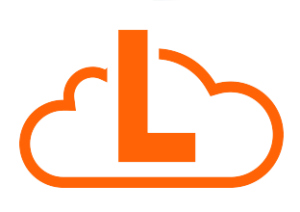ECM in the Cloud
The Advantages to a Cloud-Based ECM System
It’s no secret, the future of business application hosting is moving from dedicated on-site hardware to the cloud. Enterprise content management (ECM) is no exception.
Reduce Server Support Costs
In the early days of cloud migration, the focus for most businesses was to eliminate or reduce the cost and frustration of maintaining on-site servers and networking hardware. To this end, service providers like Amazon Web Services (AWS) and Rackspace provided system administrators the ability to spin up Linux and Microsoft servers on-demand that were hosted on hardware and virtual machine software maintained by the service provider. The only major disadvantage of this approach was the cost of the server with respect to memory and CPU utilization, especially if your ECM application required a decent amount of server horsepower to run. While these companies also advertised “managed services”, typically this provided a minimal amount of support for the OS. Troubleshooting and maintenance could be simply setting the security updates to auto-update. If an upgrade failed, the finger-pointing would be targeted at the un-supported application code. While this situation was a major improvement over hardware maintenance, it was a long way from the truly hassle-free promise of ECM in the cloud.
ECM in the Cloud 2.0
A true cloud-based application provides an organization access to ECM solutions without any need for server maintenance. Enterprise content management systems like Laserfiche and FileBound provide their software on infrastructure that they maintain. So your company simply pays the monthly fee to access the software directly from the ECM vendor.
What are the disadvantages of ECM in the cloud?
For organizations building their infrastructure from the ground up, there really isn’t any disadvantage of implementing a new ECM system using a cloud-based solution. Maybe in the rarest of circumstances, when a massive amount of server hosting resources is needed, a dedicated hosting solution would be best. For organizations with existing ECM solutions in place, especially those with 3rd party legacy integrations, the significant cost of migrating to a cloud-based ECM solution is the initial data import and workflow migrations from the existing application. Once this process is complete, ongoing maintenance costs are reduced. Upgrading to a cloud-based ECM system often pays for itself.
Are cloud-based ECM solutions secure?
Yes, one of the major advantages of migrating your ECM applications to the cloud is enhanced security at a lower cost. Your organization still needs to be mindful of security, but many of the concerns related to the security of the server infrastructure are now handled by the software vendor.
What are some of the advantages of ECM in the cloud beyond server support?
Today’s modern ECM solutions are not simply traditional systems that run on hosting platforms maintained by the vendor. They are the cutting-edge technology created by leading companies that have been providing ECM software for decades. Benefits of cloud-based ECM include:
- Better User Interfaces
- Better Workflow Automation
- Easy Integration with 3rd Party APIs
- Codeless Customization
- Superior Collaboration Options
How to migrate to the cloud from a legacy ECM?
The first step in the migration process to a cloud-based ECM solution is to review your organization’s existing systems and required features and functionality. While it can be tempting to look at a migration strategy as simply replacing the old system with a new system, your organization can benefit from a detailed evaluation of your practices, and as a result, from potentially changing some of your existing workflows and business practices. Modern cloud-based ECM systems can provide intelligence to your content and frequently eliminate repetitive click-based tasks. Just because you did something one particular way in the past doesn’t mean you have to replicate that behavior in the future. A good migration plan will discover new efficiencies and, in some cases, even eliminate the need for clunky 3rd party integrations.
Do I need to move all my dedicated ECM solutions to the cloud at the same time?
The migration process for most organizations isn’t simply creating a data migration strategy and turning on all new sets of user interfaces in a single step. When building an ECM implementation plan, review your organization and consider the following:
- What are your short-term and long-term business goals? How will your ECM system help you meet those goals?
- How does information move across departments and users?
- How does your organization handle different types of content?
- Does your organization have multiple ECM systems?
- Are there undocumented systems and processes?
- Is there an opportunity to remove duplicate content?
As an award winning ECM (Enterprise Content Management) systems reseller, FreeDoc® has been providing support and installation services to the public sector and private organizations for over 20 years.
58% of all US municipalities use Laserfiche® for their ECM solutions
Visit our Laserfiche page for more information.




